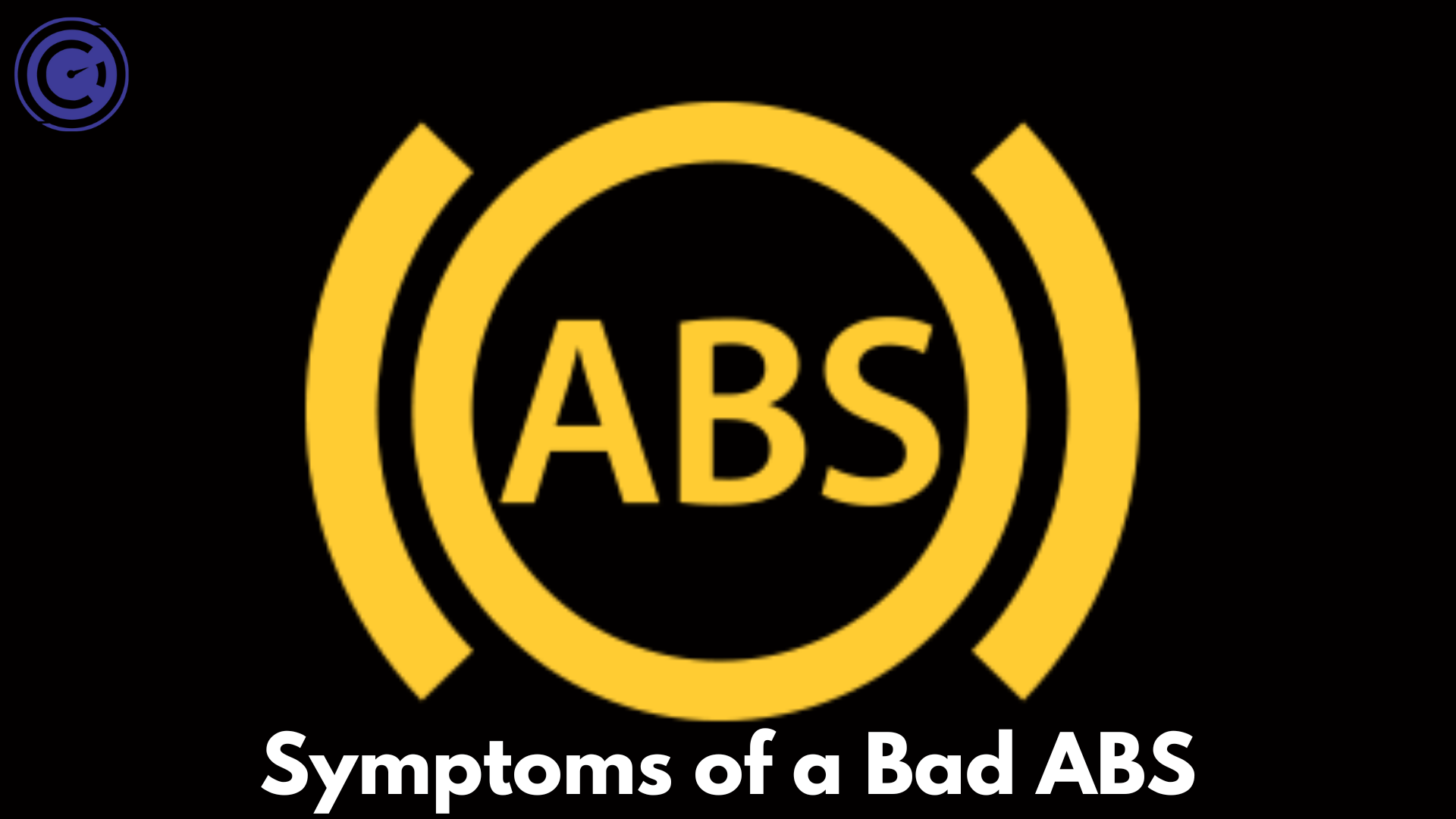As a responsible car owner, you know that maintaining your vehicle’s safety features is paramount to safe driving. One critical component that often goes overlooked is the Anti-Lock Braking System (ABS). This system plays a crucial role in preventing wheel lockup during braking, ensuring you maintain control of your vehicle even in slippery conditions. In this blog post, we will delve into the symptoms of a bad ABS, explore the potential causes of ABS failure, discuss methods for diagnosing a faulty ABS system, and offer solutions and recommendations for addressing these issues.
Table of Contents
Symptoms of a Bad ABS:
As a car owner, you rely on your vehicle’s various systems to keep you safe on the road. One critical safety feature often taken for granted is the Anti-Lock Braking System (ABS). This system plays a vital role in preventing wheel lockup during braking, allowing you to maintain control and avoid skidding on slippery surfaces. However, like any other automotive component, ABS systems can encounter issues. To ensure your safety and that of others on the road, it’s essential to recognize the symptoms of a bad ABS. In this article, we will explore these symptoms in detail, helping you identify potential problems early on.
Illuminated ABS Warning Light:
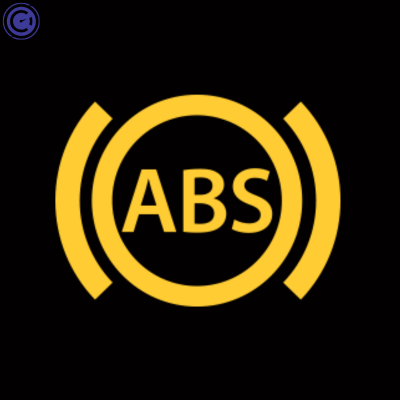
The most straightforward and common indicator of a potential ABS issue is the illuminated ABS warning light on your dashboard. This light, often labeled “ABS” or represented by an icon, serves as a built-in diagnostic tool. When the ABS system detects a problem within itself or related components, it triggers this warning light. Ignoring it is not an option, as it signifies a potential safety concern that requires immediate attention.
Unusual Brake Pedal Feel:
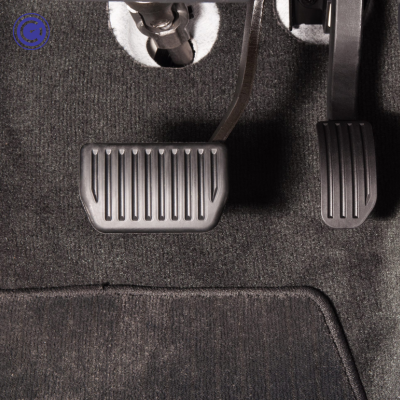
Have you ever experienced a peculiar sensation in your brake pedal when you apply the brakes? If your brake pedal feels spongy, pulsates, or vibrates, it can be a clear sign of ABS malfunction. The ABS system is designed to ensure a smooth and controlled braking experience. Any deviation from this norm, such as an inconsistent or erratic pedal feel, should prompt a closer inspection.
Wheel Lockup During Braking:

One of the primary functions of the ABS is to prevent wheel lockup during hard braking, particularly on slippery or uneven surfaces. If you find that your tires are locking up even with light brake pressure, it’s a strong indicator of ABS failure. This can result in longer stopping distances and a potential loss of steering control.
Steering Wheel Vibration:

During braking, if you feel unusual vibrations transmitted through the steering wheel, it could be linked to problems with your ABS system. These vibrations may not always be pronounced, but they are a crucial sign to address. They indicate that your ABS system is struggling to modulate brake pressure effectively.
Strange Noises:
Another symptom of a malfunctioning ABS system can be strange noises while braking. These noises can include grinding, clicking, or buzzing sounds. These sounds may originate from various ABS components and can be indicative of a malfunction. Identifying the specific source of the noise is essential for diagnosis and repair.
Potential Causes of a Bad ABS:
The Anti-Lock Braking System (ABS) in your vehicle is a critical component that plays a pivotal role in your safety on the road. It ensures that your wheels don’t lock up during hard braking, allowing you to maintain control and avoid accidents, especially on slippery surfaces. However, like any complex system, ABS can experience malfunctions. To effectively address these issues, it’s important to understand the potential causes of a bad ABS. In this article, we will delve into these potential causes, shedding light on the culprits that may be compromising your ABS system’s performance.
Sensor Failure:

One of the most common reasons behind ABS malfunctions is sensor failure. Your vehicle’s ABS relies on speed sensors located at each wheel. These sensors continuously monitor the speed of the individual wheels and provide data to the ABS control module. When any of these sensors fail or provide inaccurate readings, the ABS system may not function correctly. This can lead to issues like wheel lockup during braking or an illuminated ABS warning light on your dashboard.
Sensor failure can occur due to wear and tear over time, exposure to harsh environmental conditions, or damage from road debris. Regular maintenance and inspections can help detect sensor issues early.
Hydraulic Issues:
The ABS system operates hydraulically, modulating brake pressure to prevent wheel lockup. Any problems within the hydraulic components can compromise ABS functionality. Hydraulic issues can stem from:
- Brake Fluid Leaks: Leaks in the brake lines or hydraulic components can reduce brake fluid pressure, affecting the ABS’s ability to control brake force.
- Air in the Brake Lines: Air trapped in the brake lines can create a spongy brake pedal feel and disrupt the ABS’s operation. Bleeding the brakes is necessary to remove trapped air.
- Faulty ABS Pump: The ABS pump pressurizes the brake fluid for ABS operation. If the pump malfunctions, it can result in inconsistent brake pressure and ABS system failure.
Regular brake fluid checks and maintenance can help prevent hydraulic issues and ensure the ABS system’s reliability.
Fuse Box Problems:
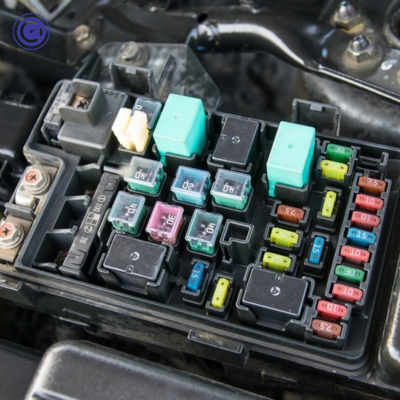
Electrical components play a vital role in the functioning of the ABS system. The ABS system relies on the power supplied by the vehicle’s electrical system, and any disruptions in this supply can lead to ABS malfunctions. Common electrical issues include:
- Blown Fuses: If a fuse related to the ABS system blows, it can interrupt power flow and trigger the ABS warning light on your dashboard.
- Faulty Connections: Poor or loose connections in the fuse box or wiring harness can lead to intermittent electrical problems affecting the ABS.
Regular inspections of fuses and wiring connections can help identify and resolve these issues promptly.
Control Module Malfunction:
The ABS control module serves as the “brain” of the ABS system. It processes data from the speed sensors and makes real-time decisions to modulate brake pressure. If the control module becomes faulty or damaged, it can lead to ABS system malfunctions. Control module issues can result from:
- Electrical Failures: Voltage spikes, short circuits, or other electrical problems can damage the control module.
- Software Glitches: In some cases, software glitches or programming errors can affect the control module’s operation.
Replacing the control module and ensuring it is properly programmed may be necessary to resolve control module-related issues.
Wiring Issues:
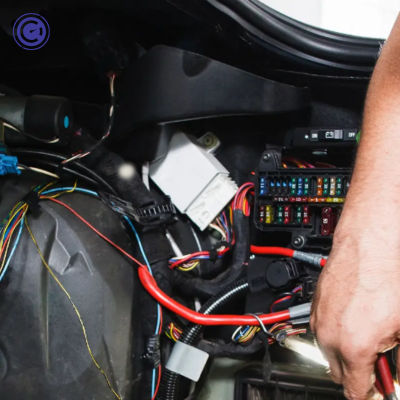
The intricate network of wiring connecting various ABS components can be susceptible to damage over time. Damaged or frayed wiring can disrupt communication between the ABS components and the control module. Causes of wiring issues include:
- Physical Damage: Excessive wear and tear, exposure to environmental factors, or accidents can damage the wiring harness.
- Corrosion: Corrosion due to moisture exposure or salt on the road can compromise electrical connections.
Regular visual inspections of the wiring harness can help identify and address wiring issues early.
Diagnosing a Bad ABS:
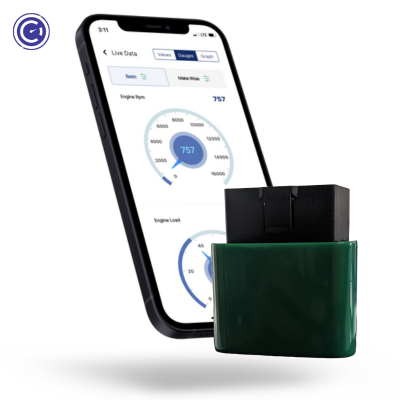
Recognizing the symptoms of a malfunctioning Anti-Lock Braking System (ABS) in your vehicle is just the first step. The next crucial step is diagnosing the root cause of the problem accurately. Diagnosing a bad ABS system requires a systematic approach to identify the underlying issues and determine the necessary repairs. In this article, we’ll explore various methods for diagnosing a bad ABS system, helping you uncover the truth behind ABS system issues.
Visual Inspection:
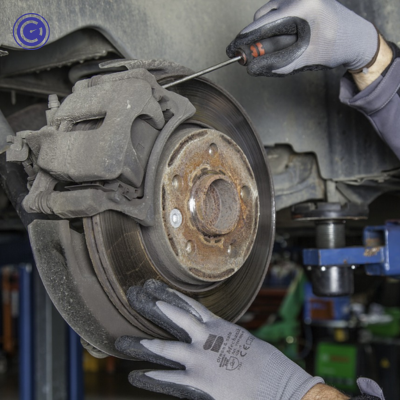
A visual inspection is often the first and simplest step in diagnosing a bad ABS system. It involves examining the ABS components and their surrounding areas for any visible signs of damage, wear, or issues. Here’s what to look for during a visual inspection:
- Check for Leaks: Inspect the brake lines, connections, and hydraulic components for any signs of brake fluid leaks. Leaks can affect the ABS system’s hydraulic operation.
- Inspect Wiring: Examine the wiring harness that connects various ABS components, looking for any frayed, damaged, or corroded wires. Faulty wiring can disrupt communication between ABS components.
- Verify Sensor Connections: Ensure that the speed sensors at each wheel are securely connected and free from damage.
A visual inspection can help identify obvious problems that may need further investigation or repair.
Checking the ABS Warning Light:

The behavior of the ABS warning light on your dashboard can provide valuable diagnostic information. Pay attention to how the light behaves when you start your vehicle and during braking:
- Normal Operation: The ABS warning light should briefly illuminate when you start your car, indicating a functional self-check. It should then turn off after a few seconds.
- Illumination During Braking: During regular braking, the ABS light should remain off. If it illuminates while you’re applying the brakes, it suggests a potential ABS system issue.
- Flashing ABS Light: A flashing ABS light typically indicates an active fault within the ABS system. The number of flashes may correspond to a specific error code.
Understanding the ABS warning light’s behavior can provide initial insights into the nature of the problem.
Self-Diagnostic System:
Many modern vehicles are equipped with self-diagnostic systems that can identify ABS faults. These systems continuously monitor the ABS system’s performance and store error codes when issues are detected. To access and interpret these error codes, consult your vehicle’s owner’s manual. The process typically involves using a combination of actions, such as turning the ignition on and off in a specific sequence, to access the diagnostic mode.
Once in diagnostic mode, the system will provide error codes that correspond to specific ABS system faults. These codes can help pinpoint the issue more precisely.
Scan Tool Reading:
If your vehicle doesn’t have a built-in self-diagnostic system or you want more detailed information about the ABS system’s status, consider using GaragePro OBD-II scanner tool or any other scan tool that might be available. GargaePro can read and interpret ABS-related error codes, providing specific information about the fault. Here’s how to use a GaragePro scan tool for ABS diagnosis:
- Plug the OBD-II scan tool into your vehicle’s OBD-II port (usually located beneath the dashboard near the steering column).
- Turn the ignition on, but do not start the engine.
- Open the GaragePro app on your phone and connect it to GaragePro OBD via Bluetooth.
- Navigate the app to do the full scan. GaragePro will communicate with the ABS system and retrieve error codes. Note the codes and their descriptions.
- Cross-reference the error codes with a repair manual or online resources to determine the nature of the problem.
An OBD-II scan tool is a valuable tool for in-depth ABS system diagnosis and can provide specific information for more accurate repairs.
Professional Diagnosis:
For complex or elusive ABS system issues, consulting a qualified mechanic or technician with specialized diagnostic equipment is often the best course of action. These professionals have the expertise and tools to perform a thorough diagnosis of the ABS system. They may use advanced diagnostic equipment to perform tests such as wheel speed sensor testing, hydraulic system testing, and control module analysis.
Professional diagnosis ensures accurate identification of the problem and facilitates the precise repair or replacement of ABS components.
Solutions and Recommendations:
Diagnosing a bad Anti-Lock Braking System (ABS) is just the beginning of the journey towards ensuring your vehicle’s safety. Once you’ve identified the issues plaguing your ABS system, it’s time to explore the solutions that will get it back in optimal working condition. In this article, we will discuss various solutions and recommendations for addressing a bad ABS system, helping you regain confidence in your vehicle’s braking performance.
Repairing Minor Issues:
For some ABS problems, the solution may be simpler than you think. Here are some common minor issues and their respective repairs:
- Sensor Replacement: If a faulty wheel speed sensor is the culprit, replacing the sensor can often resolve the issue. Ensure that the new sensor is compatible with your vehicle’s make and model.
- Fixing Leaks: If brake fluid leaks are compromising your ABS system’s hydraulic operation, repairing the leaks and replenishing the brake fluid can restore proper functionality.
- Repairing Damaged Wiring: When damaged or frayed wiring is the problem, repairing or replacing the damaged sections of the wiring harness can reestablish communication between ABS components.
These minor repairs can often be done by DIY enthusiasts or automotive professionals and are cost-effective solutions for common ABS problems.
Replacing the ABS Control Module:
In more severe cases where the control module is the source of the ABS issue, replacing the module may be necessary. The ABS control module is the central brain of the system, managing the entire operation. If it becomes faulty or damaged beyond repair, replacement is often the only solution.
Replacing the ABS control module should be carried out by a qualified mechanic or technician. It typically involves:
- Identifying the exact make and model of your vehicle’s ABS control module to ensure compatibility.
- Removing the old control module and disconnecting any electrical connectors and wiring.
- Installing the new control module and connecting all electrical components.
- Performing a system reset or calibration to ensure proper communication between the new module and the ABS system.
- Professional replacement of the control module ensures that your ABS system functions seamlessly.
Seeking Professional Help:

When in doubt or if you lack the tools, expertise, or time to diagnose and repair ABS system issues yourself, it’s always wise to consult a trusted mechanic or automotive technician. These professionals have the experience and specialized equipment necessary for accurate diagnosis and effective repairs.
A qualified mechanic can:
- Thoroughly diagnose the ABS system using advanced diagnostic equipment.
- Identify the exact nature of the problem, whether it’s sensor-related, hydraulic, or control module-related.
- Perform necessary repairs or replacements, ensuring that the ABS system operates optimally.
- Conduct post-repair testing to confirm that the ABS system is functioning correctly.
- Professional help is especially crucial for complex ABS issues or when multiple components require attention. It provides peace of mind, knowing that your vehicle’s safety features are in expert hands.
Maintaining the ABS System:
Prevention is often the best solution. Regular car maintenance and addressing minor ABS issues promptly can help prevent major ABS system failures. Here are some tips for maintaining your ABS system:
- Regular Brake Fluid Checks: Monitor your brake fluid level and quality. Brake fluid absorbs moisture over time, which can affect the ABS system’s performance. Replace old or contaminated brake fluid according to your vehicle’s maintenance schedule.
- Addressing Warning Lights Promptly: If your ABS warning light illuminates, don’t ignore it. Promptly investigate the issue to prevent further damage or safety risks.
- Periodic Inspections: Include ABS system checks in your routine vehicle inspections. Look for visible damage, leaks, or loose connections.
- Professional Maintenance: Schedule regular maintenance with a trusted mechanic who can perform comprehensive checks of your vehicle’s ABS system and other safety features.
Conclusion:
Recognizing the symptoms of a bad ABS system is essential for safe driving and accident prevention. Understanding the potential causes and available diagnostic methods empowers car owners to make informed decisions when ABS issues arise. By following the recommended solutions and seeking professional help when necessary, you can ensure that your ABS system operates optimally, contributing to your overall safety on the road

